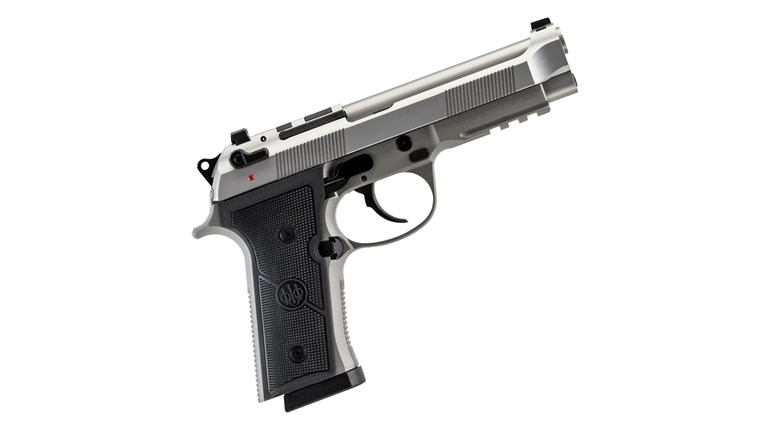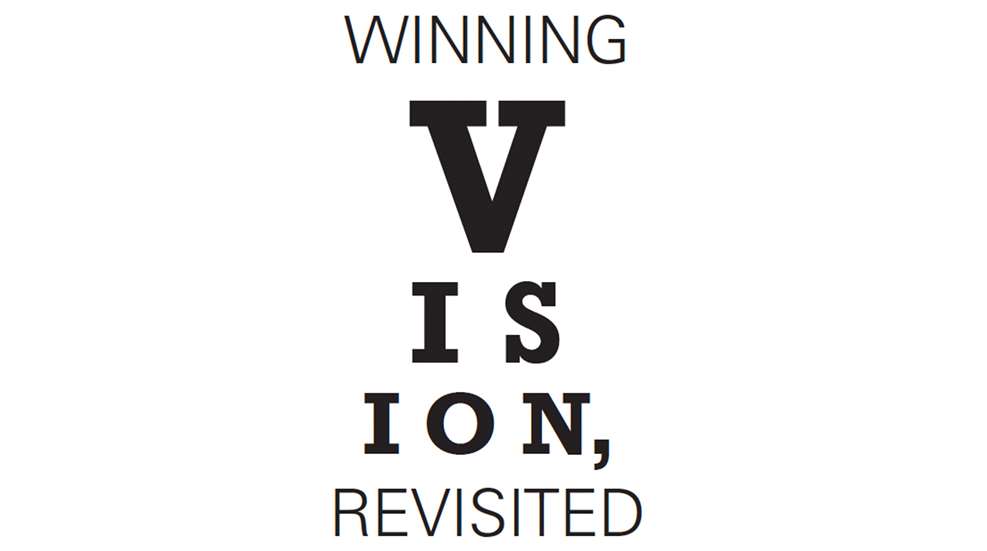
In the years since Shooting Sports USA published my first article on shooters’ eye exams (entitled “Winning Vision” in May 2009), I’ve made some additional observations with hundreds of patients. This update includes helpful hints gleaned from that near decade of extra experience, on how to get a good eye exam to improve sight picture. Your eye care professionals may have taken good care of your needs—but these tips will help further.
All Refractions Are Not Created Equal
Many of my patients who come in for their shooters’ exams bring copies of their most recent eyeglass prescriptions, some prescribed as recently as a week prior. Much to my dismay, about half of them tend to be incorrect. To demonstrate this, I simply show my patients their phoroptor results (the instrument with all the lenses), as compared to the numbers written on their prescriptions, which could be from an Ophthalmologist or an Optometrist, from private practices, HMOs, or commercial settings.
With our computerized society and all the data collected from credit card companies, cell phone service providers and the like, we cannot escape from being categorized. There is a dirty little secret I discovered in my industry years ago when a lab rep from one of the biggest vision plans dropped by. All doctors within this vision plan have a number attached to his/her profile that represents their “redo rate,” some as high as 25 percent. That means one in four patients complained enough about their prescription eyeglasses that they had to be re-done. This is most likely in addition to the significant percentage who struggled with their lenses, but never complained.
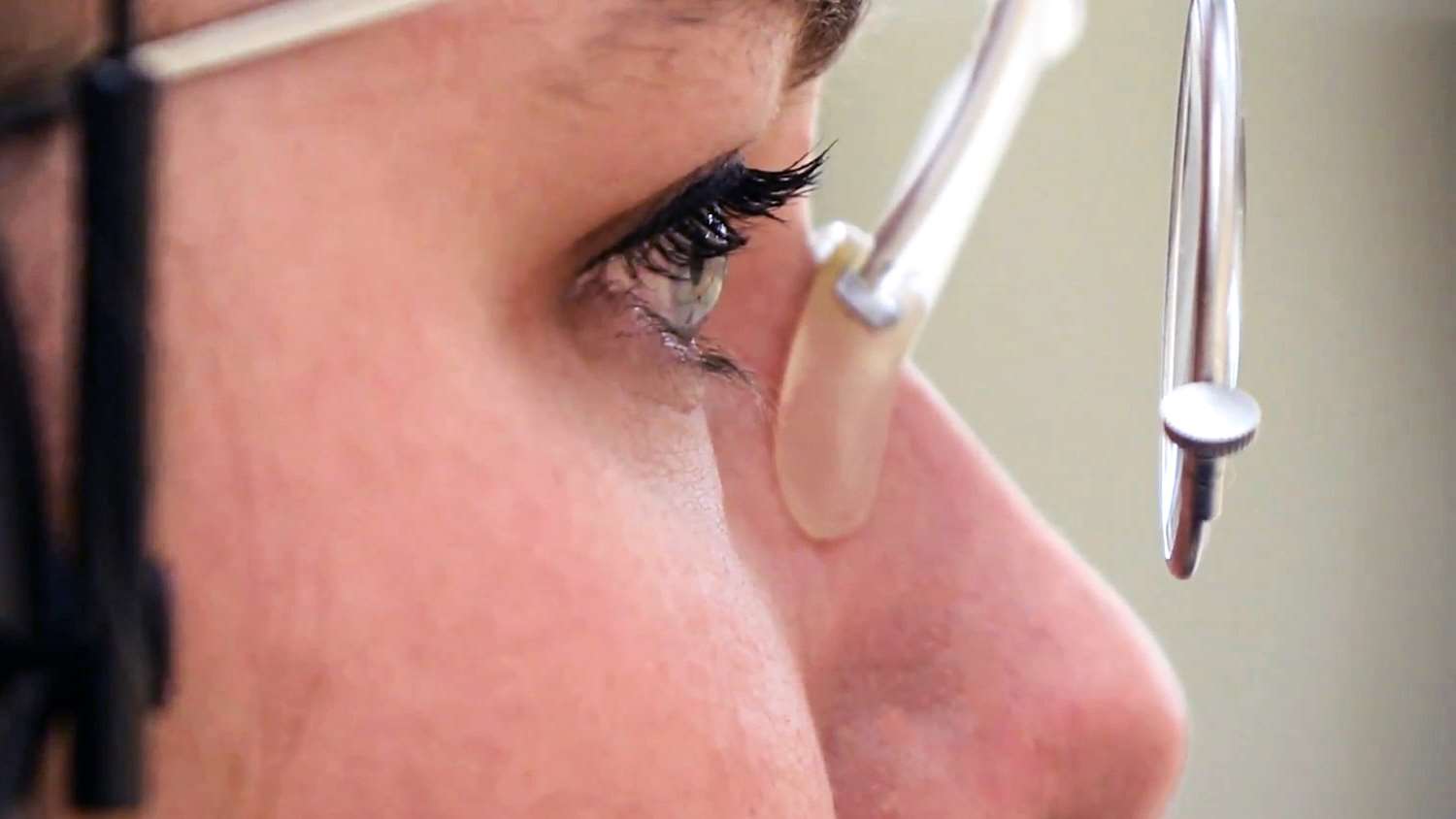
During your last eye exam, did your eye care professional double check your distance vision with both eyes opened “after” doing the exam to each eye alone? Often when checked binocularly, the eyes differ from when checked monocularly. Since we all see with both eyes opened, this practice should always be done during the end of the refraction. Both the right and left eyes should be checked simultaneously with additional lenses to confirm what was found with each eye alone. It doesn’t take long, but this last and final verification tends to be omitted, with the possible subsequent error to the Rx potentially accounting for frequent eyestrain.
A common practice to reduce eyestrain is to lessen the new eyeglass prescription, leading to suboptimal vision. I however am from the “Old School,” where one would do a diligent exam and prescribe what was found, as recommended by our Dean. I could never understand why some doctors frequently reduce the new prescriptions so that patients will “adjust easier” to their new eyeglasses. In reality, the patients are short-changed with a less than perfect Rx, and may need to come back sooner for another update. I have worked with some associates who changed prescriptions so consistently that it became ridiculous. I jokingly tell my patients who move away, when seeking eyecare from another doctor, to find one who knows how to reload ammo, in which case a more precise Rx may result.
Though every doctor may have a certain preference to the sequence of tests, I believe it most practical to start with the refraction, followed by health tests such as the glaucoma test, visual field test, dilation, and others when deemed necessary. There exists the possibility of irritation to the eyes, fatigue, and increased anxiety if the refraction is done at the end of the exam, which thereby would affect the quality of the patient’s responses. Although eye health tests are equally important, the refraction should not be treated as an afterthought.
Beware of the eyecare professionals who have never worn eyeglasses, and the younger doctor who does not need multifocal lenses. They may understand vision correction in theory, but lack the practical experience in wearing corrective eyeglasses, multifocal lenses in particular, to fully understand what most of us go through. Before a shooter’s exam can be done well, the prescription must be accurate. These numbers will be the foundation to build a proper shooting Rx.
Listening To The Patient
It upsets me when the patient is ignored. Listening, at times, seems to be a lost art. Three doctors, two Optometrists, and one Ophthalmologist from an HMO were not able to solve a woman’s vision complaint when she could not see well enough as a seamstress. No one bothered to acknowledge that she needed to see at 10 inches, they just gave her a standard Rx “for her age,” focusing at 18 inches. She was then told there was no medical reason why she couldn’t see. This is an example of why some of our shooters have a very difficult time describing their needs and getting an accurate correction for seeing their sights.
Too Many Computers
Computers are essential in our daily lives and in many fields, including the optical/ophthalmic field. Many of you may have had automated instruments determine your eye health and vision. Can you imagine a $15,000 to $60,000 computer telling the doctor which Rx you need to see best with, and the doctor listening? That computerized refraction printout may sway the doctor’s final prescription, especially during a busy day. My patients have been very happy to “tell” me which lenses provide their best vision. My one-on-one interactions during the exam have been important as I developed a sixth sense for their responses, and I would repeat the lens choices many times when needed to obtain the final Rx. With my way of checking eyes, my redo rate was minuscule but bear in mind, patients changing their minds on lens types, materials, tints and photochromic choices also count into our redo rate, so it will never be zero percent.
Inaccuracies of Eyeglass Prescriptions
I was fascinated when I read Don Nygord’s article on vision and eyeglass prescription, coming from a perspective outside of the optical field. Don mentioned that lenses were rarely made correctly, and he even had a lensometer to check and verify lenses. His Nikon lensometer was given to me as a souvenir, and after evaluating it, I can say that it was highly sensitive to inaccuracy. The manager from one of my labs once said the most accurate and reliable lensometers are the manual ones. Computerized lensometers are the norm nowadays and although they work well, it’s difficult to judge the blurriness of a lens when the Rx is off. With a manual lensometer, I can see the blurred cross hair images of the instrument. I once had a prolonged argument with a lab manager when I sent back a job which was off. He insisted that the lens was within tolerance using their “highly sophisticated computerized instruments,” but I knew it wasn’t. Unfortunately, there’s a fine line between quality control and profit margin.
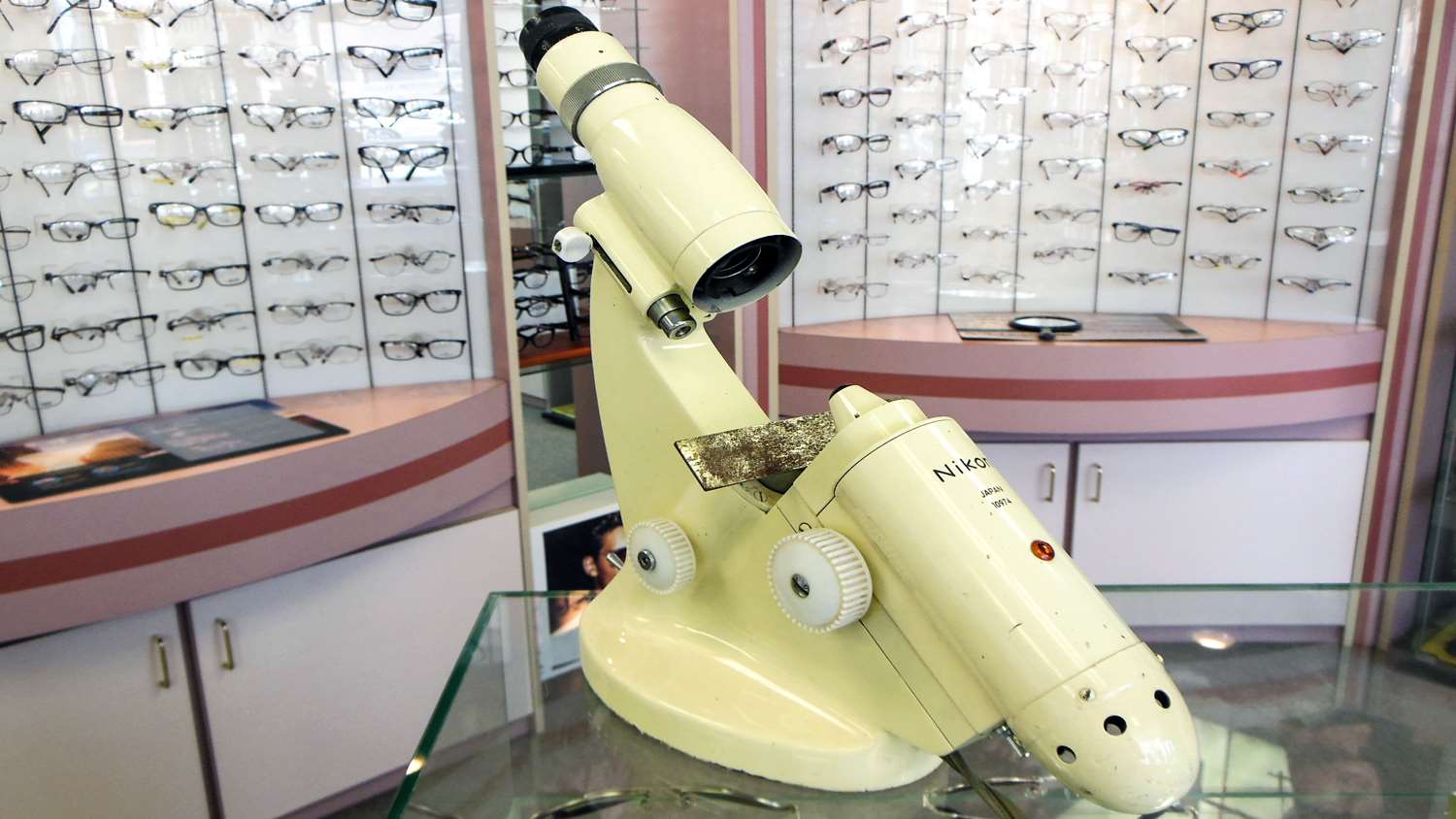
Mistakes do happen. Transferring the Rx incorrectly from the exam record to the ordering screen of the lab website, typing + instead of -, lab technicians pulling out the wrong lens powers from their inventory, and making the lens with the astigmatism cylinder 90 degrees off axis are common. The final stage of quality control inspections by the lab is sometimes non-existent, but it is ultimately the doctor’s responsibility to perform the final inspections. I’ve seen first-hand where this was also not done. Too much dismay, many patients accept what they received at face value, and would never question the doctor or staff.
Eye Aberrations
Within the cornea and lens, there is what we call spherical aberration (SA). The cornea has positive SA while the lens has negative SA. While young, these two aberrations cancel each other out. With aging however, the corneal SA remains the same but the lens SA changes. Even with the best efforts from your eye doctors, older shooters don’t see as well, independent of eye health issues. Indoor ranges with reduced lighting often become a challenge with larger pupils, and the SA with our senior shooters.
Shooters’ Exam Updates
For pistol iron sight picture, including Precision Pistol, Air Pistol and other similar disciplines
Exam in real space: I no longer check the distance from the patient’s eyes to the front sight and set that distance for the reading card before I proceed with the add determination. It may work out fine but I prefer to work outside in “real space.”
I no longer consider the age of the shooter nor the length of their arms to determine their shooting Rx. It has become meaningless. Philip Hemphill (10-time NRA National Police Shooting Champion-PPC and two-time NRA National Precision Pistol Champion) who responded to a past survey preferred a +0.25 add when he was 58, while John Bickar (holder of several NRA National Junior Pistol Records) needed a +1.50 add. Although not presbyopic, even today, John started wearing this type of shooting Rx at the age of 19. This type of add will prevent young shooters from peeking at the bullseye when they take their attention off the front sight.
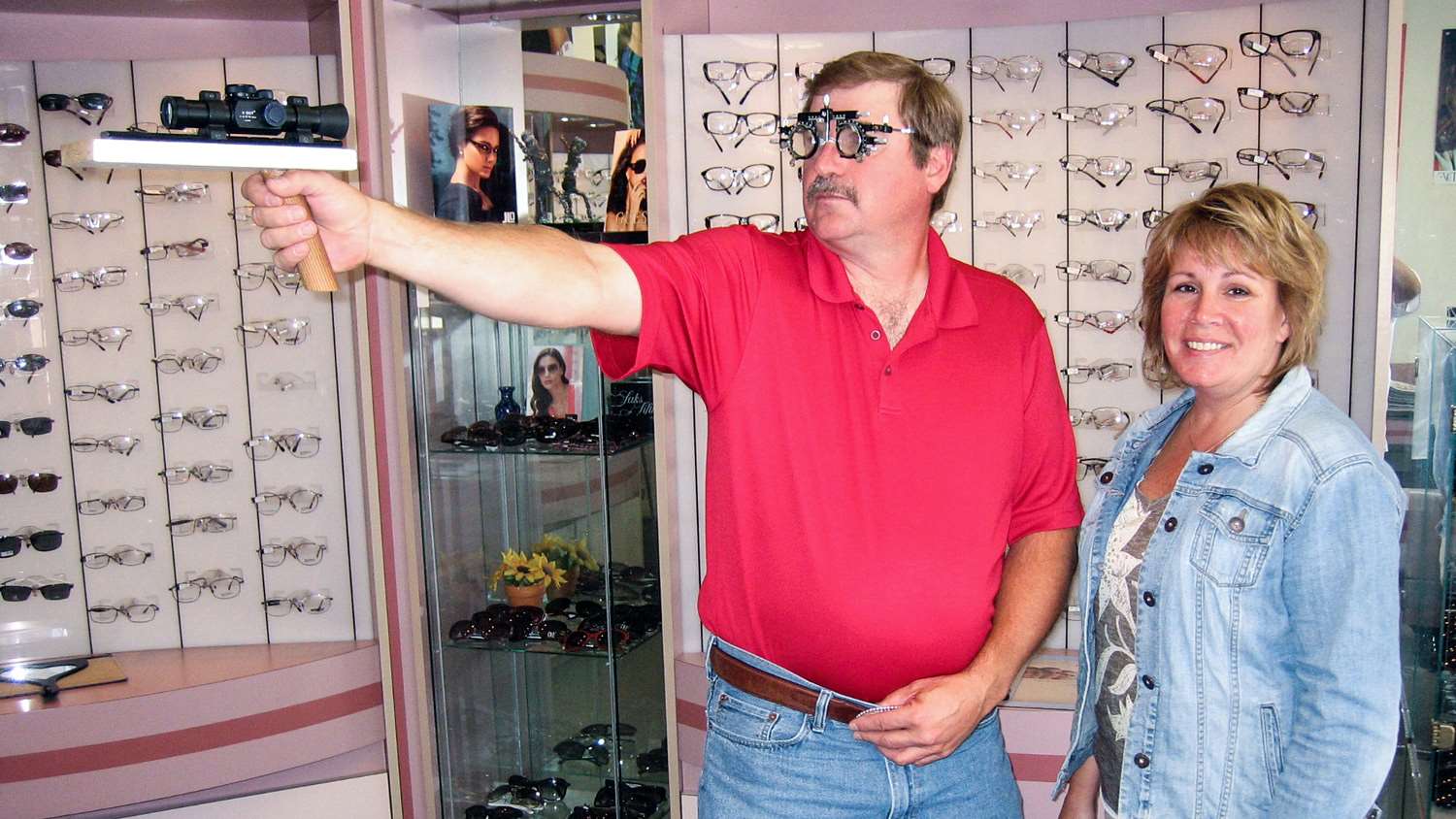
When I examined Eric Pueppke (USAS Assistant National Pistol Team Coach, Level 4 Advanced International Pistol Coach and National Pistol Coach Development Staff), I showed him two extreme lens powers which did not work for him, but another power was perfect. His wife Char meanwhile, saw the best with her preference.
Eric told me, “… one comment I would like to make is that many shooters kind of take their vision for granted and don’t realize that even though they see well, they don’t see really well. We are all, of course, used to seeing the world the way we do, and I’ve run across so many shooters that thought they had great vision, only to find out they actually don’t! I have to date found no one that gives the complete examination that you do, Norman. I still remember how you first corrected my vision with glasses, and then put in other shooter’s lenses so I could ‘see the sights the way they do.’ This was a real eye opener. All of the great position, shot process, and trigger control a shooter may develop will be greatly diminished if they have less than perfect vision.”
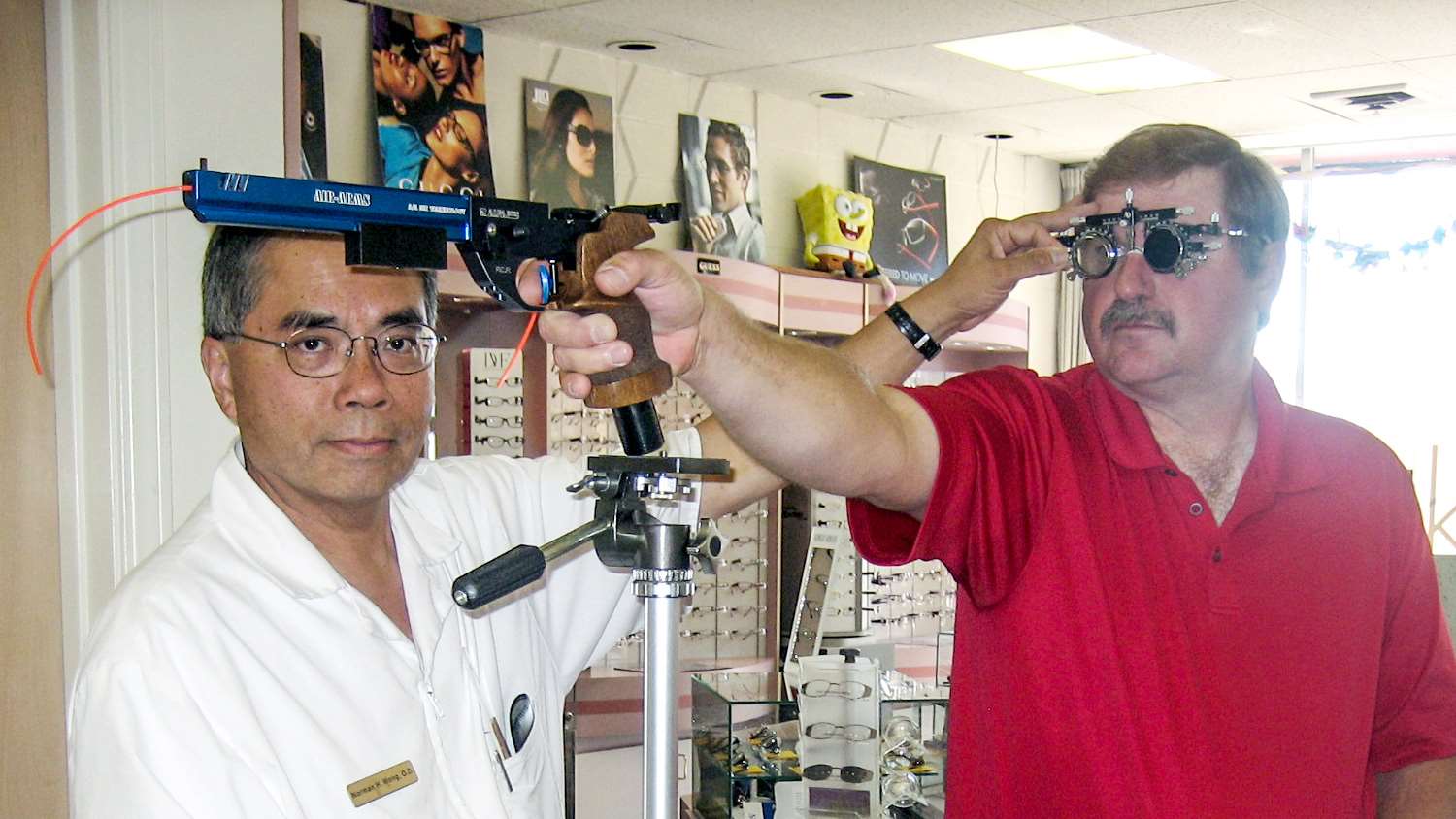
Exam using pistol sights only: I need to have the eyes relaxed as much as possible to determine the best possible shooting Rx. I prefer using actual pistol iron sights to get good patient feedback rather than an exam reading card. In my office, the shooting patient can look across the street and we use a round light fixture on the building as a bullseye target. Every shooter will be able to identify his/her best lens for their preferred sight picture. Quoting Philip Hemphill, “My eye doctor here in Mississippi gets a little uneasy when I bring my guns into his office for sight picture correction, but I have found that is the only way I can get a correct adjustment for vision. The lighting also affects the way I perceive the sights in his office.”
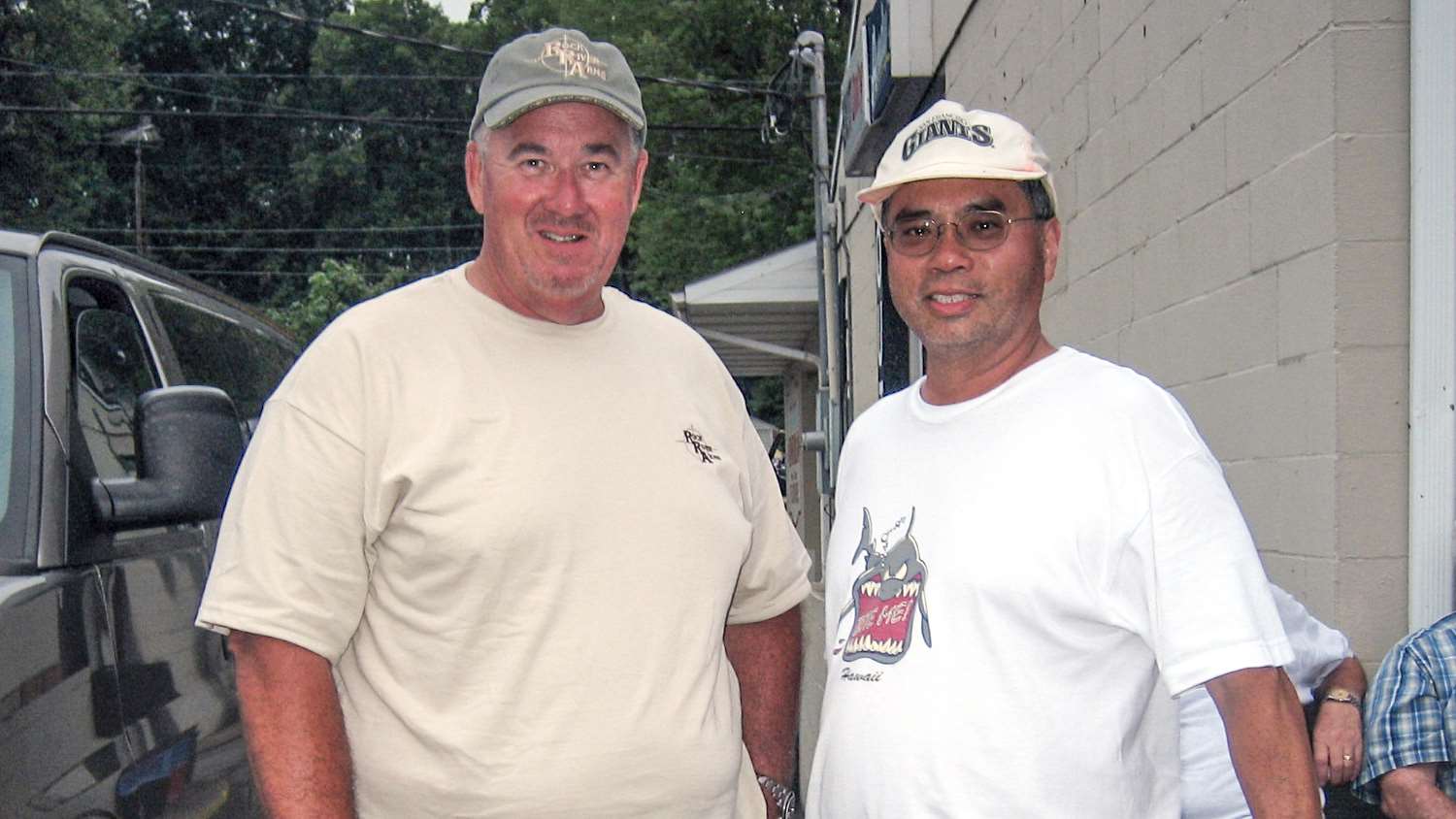
Binocularlar Vs. Monocular Testing and the Triad
Typically when we check eyes at near distances in the confined space of the exam room, we have both eyes opened with binocular testing. We then have what is known as the triad. When one looks close up, the eyes must converge so that each eye will aim at the distance of the reading card. With convergence, the eyes also accommodate and the pupil size become smaller. In accommodation, the muscles inside the eye changes causing the shape of the lens to change and thereby the focus. Even older shooters who wear multifocal lenses can still accommodate to a certain degree. For instance, a 60 year old shooter can accommodate 1.00 diopter. We also know that changes in pupil size can change the way we see.
These factors may affect our shooting prescription when doing near binocular testing while using a reading card. I’ve heard a number of times from shooters that even though the eye doctor used the measurement of the eye to the front sight, the shooting Rx was off. While doing monocular testing with iron sights, the triad would no longer be a factor and a more consistent outcome will result.
Depth of field: I simulate the lighting conditions as close as possible to the shooting environment. When one needs to see outdoors to compete in daylight, we have large windows to allow plenty of light to the shooter’s eyes, which will have a positive effect onto the pupil by making it smaller. With smaller pupils, we have an extended depth of field. At this point, the smaller pupil become advantageous for the sight picture. This topic is further discussed in a previous article.
When we look at the front sight, the bullseye will be blurred, but how much blur is preferable if the front sight is clear? We can have 20/25 blur or 20/100 or more blur. A very blurred bullseye at 50 yards may make it difficult to judge the sight picture and be frustrating. By checking the shooter’s vision while looking at the front sight in relationship to the rear sight and then the bullseye, the shooter will be able to “decide” on their lens preference without the loss of front sight clarity, or very minimal loss. Center hold, six o’clock hold, or sub-six hold may affect the shooter’s decision. The preferable sight picture appearance chosen cannot be demonstrated by the use of a reading card. The shooting patient would be able to see the exact sight picture before getting their shooting glasses. There’s no buyer’s remorse.
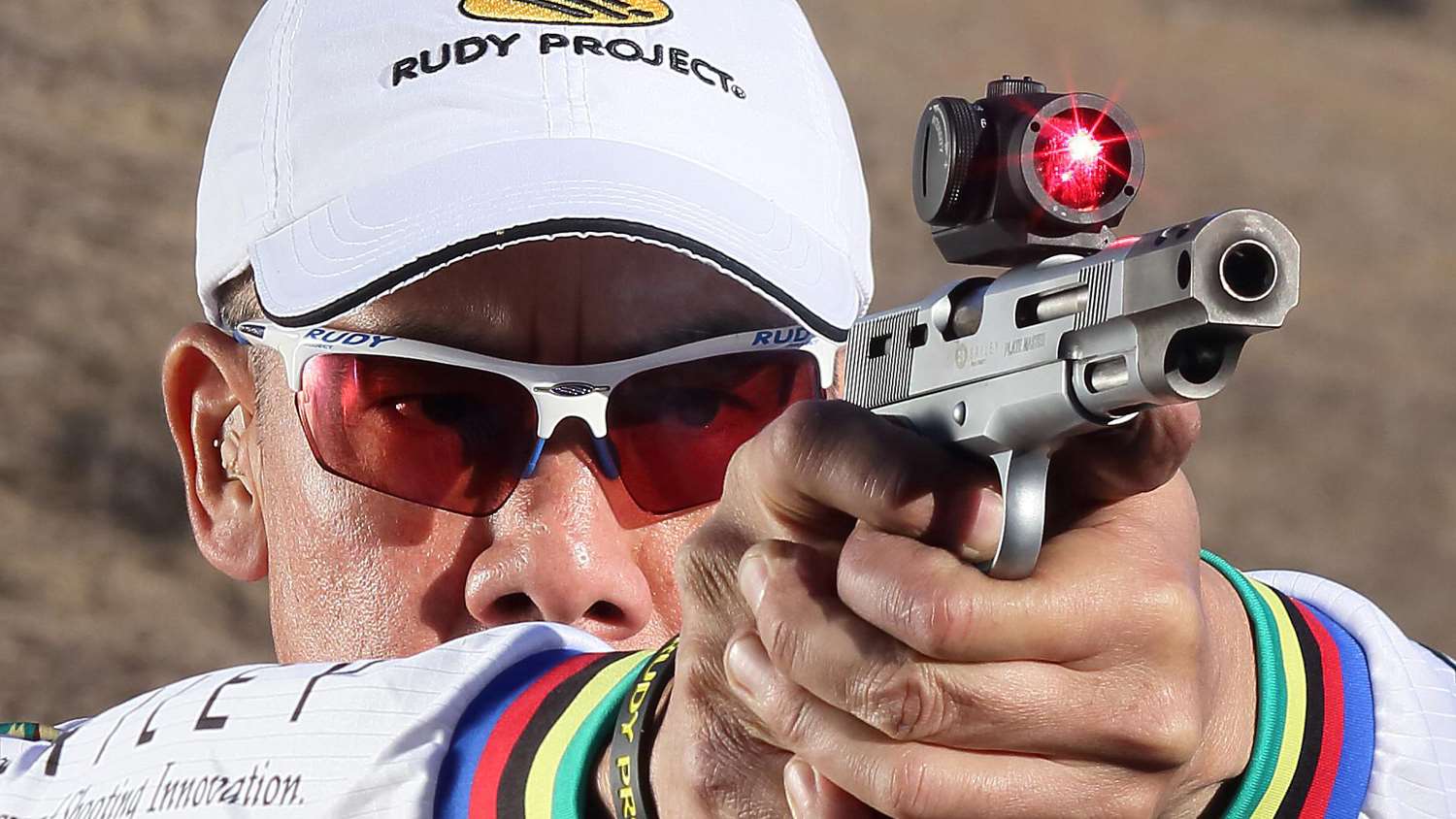
As Jim O’Young discussed with Dr. Wong, “It’s amazing that shooters may spend thousands of dollars for their equipment but totally ignore their vision. You can’t hit what you can’t see, and seeing depends on your eyes and the quality of your vision.”
Modified Mono-Vision With The Non-Shooting Eye
Once the best lens is determined for the shooting eye, what do we do with the non-shooting eye? I don’t believe any eye doctor who doesn’t shoot will have any idea what to do (or care), however this is very important. A patient who came to see me for a second opinion about his shooting Rx said his previous doctor asked him what to do with the opposite eye. Would the preference be the distance prescription or using the same add as the shooting lens? The answer is generally neither.
Shooters would like to see off to the distance without changing eyeglasses. This is especially important for seeing well enough to distinguish their target numbers and not cross-fire. However, having one lens for far and the other lens near may be difficult to adjust, and cause the feeling of disorientation. Trial lenses on a trial frame will demonstrate exactly whether this will work or not. I have found that the full distance Rx for the non-shooting eye will not work, therefore a modification is needed. Usually, altering the power for the non-shooting eye by +0.25, to +0.50 at most, will allow this “modified mono-vision” technique to be workable. Very happy shooting patients! They now see the sight picture well with the shooting eye, see down-range well with the non-shooting eye, and they can do both in comfort.
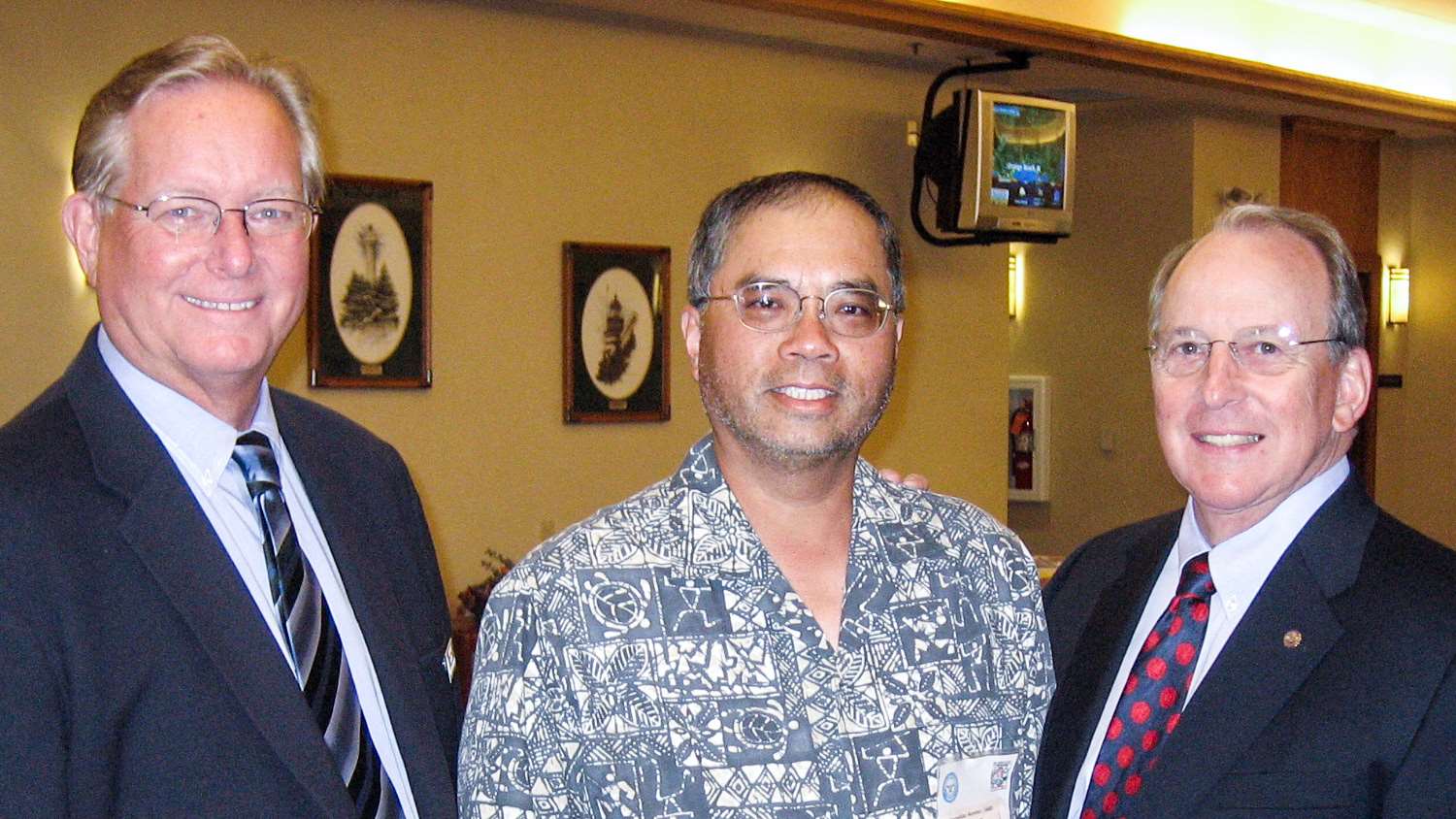
For those who cannot keep both eyes opened for shooting without covering the non-shooting eye, one choice would be a flip-down occluder. Another choice would be a small piece of translucent scotch tape placed over the lens of the non-shooting eye so the sight picture would not be disturbed for the shooting eye. Closing the lid would not be recommended for precision shooting and similar types of competitions.
Progressive lenses are never recommended for seeing iron sights. Many shooters would be happy with single vision lenses, but if there is a need for better close-up vision to be able to score, load magazines, use an overlay and so on, then a simple standard bifocal may work well. The position of the bifocal segment must be placed lower than normal to avoid interference with the sight picture. As the shooter becomes fatigued, so too may the head position and stance. The exact final height position can easily be demonstrated with a small piece of scotch tape, with the top of the tape simulating the top of the bifocal segment. Usually, several repositioning attempts will be needed before the patient knows what height would be ideal. This is very important to get the shooter’s feedback.
The final bifocal powers will then need to be adjusted after taking account of the different add powers for each eye on the major part of the lens. For instance, if a +2.25 add would be needed for the bifocal, the add for the shooting eye and the non-shooting eye must be subtracted to get the resultant bifocal powers for each lens.
AR-15 and Rifles with Rear Aperture Sights
By far the most popular rifle that my shooters bring in for their shooters’ exams are AR-15s using front iron sight posts with rear apertures, and no scopes. Vision with the AR-15 rifle is more challenging because of the different sight radius. The only way to check vision is through the aperture onto the front sight post and view down range. Checking the eyes in the exam room does not work as well. Please take some time to review a past article titled “Visual Disturbances through the aperture,” especially geared towards older shooters.
I have my shooters place their rifles on one of the steps of a six foot ladder at a comfortable height, so the rifle is absolutely still. Most of the time but not always, the shooters have their preference of aperture size in place. At times, we do make a change to see if a different aperture size makes a difference in front post and bullseye clarity. Even with the extended depth of field seen through the aperture, many times the front post clarity is lacking. It doesn’t take much of an add to make the post clear, and to make the very distant target blurred. The goal would be to improve front sight post clarity without affecting target clarity. Patience would be needed because as the eye becomes accustomed to the lens add shown, the eye may fatigue and a slightly different power may be needed for optimal performance. It is not uncommon that it comes down to two final lens choices with one lens becoming the eventual winner. The testing cannot be rushed. The first lens that seems to work best is usually not the final lens. We have some very astute, serious shooters, and the slightest change in their shooting lens would make a big difference during a match.
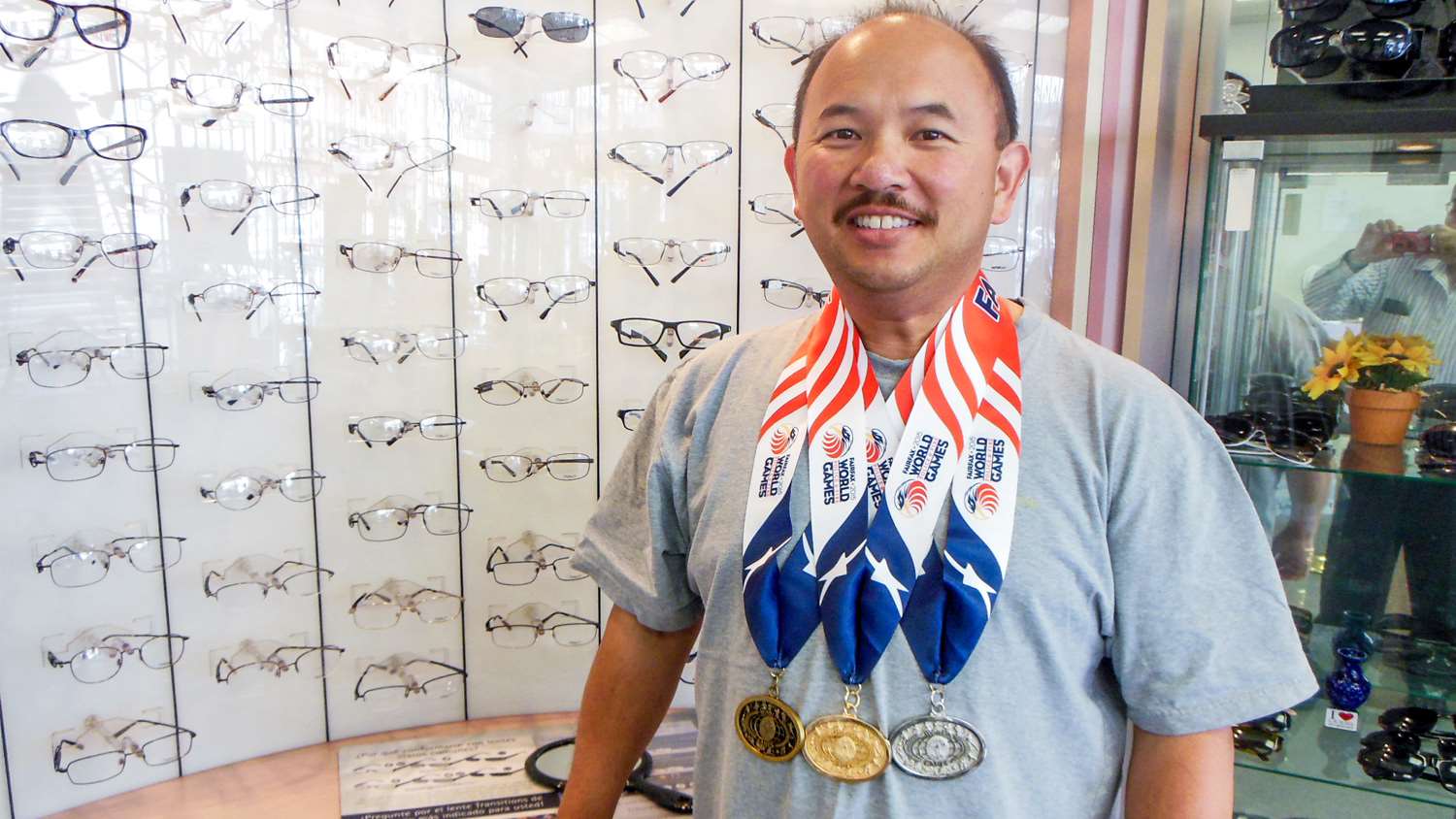
Wayland wrote, “The lens worked out great! My up-close vision had been getting worse and worse over the years, so I needed something that would bring the front sight into sharp focus when looking through the micrometer match rear sight on my rifle. Prior to the new lens, the front sight focus was inconsistent no matter how much I adjusted the iris on my rear sight, as I was struggling to get a good sight picture. The new lens solved the problem and allowed me to be more consistent. I have no doubt that the new lens helped me medal in the events that I did! Without it, I would’ve shot worse scores and ended up with lower medals—or no medals at all.”
Wayland picked up the lenses for his Champion Super Olympic shooting glasses a couple of days before leaving for the World Games in Virginia.
There is an aftermarket insert for the aperture which uses concentric diffraction rings to allow good simultaneous focus for the front sight and the bullseye. This may work well for some, but others who have come in verify their vision because either the front post or bullseye were blurred. After a shooter’s exam and a new shooting Rx, they saw well and were happy with the results. This is also not uncommon with the multifocal intraocular lens implants used for cataract surgery, and multifocal soft contact lenses, which also incorporate diffraction rings. Ideally, eyeglasses would not be needed afterwards, but that has not always been the case.
Vertex Distance
As an important reminder when using Knobloch or Champion shooting glasses, keep in mind that the lens is situated farther away from the eye than our normal day-to-day eyeglasses. Shooters having their prescription made for these types of shooting glasses may find that their vision wasn’t what they had hoped for. The extended distance of the Knobloch and Champion lens position as compared to regular eyeglasses changes the power. A nearsighted minus lens becomes weaker when it is farther from the eye. A farsighted plus lens becomes stronger when farther from the eye. It is important to bring these frames and lens holders for the doctors to see and understand what is involved. A small prescription may be insignificant but there may a 0.25 to 0.50 diopter of error with higher prescriptions. Please note some of the power changes in this article.
Best regards to our shooters, the finest people in the world! Good vision and good shooting to all.














